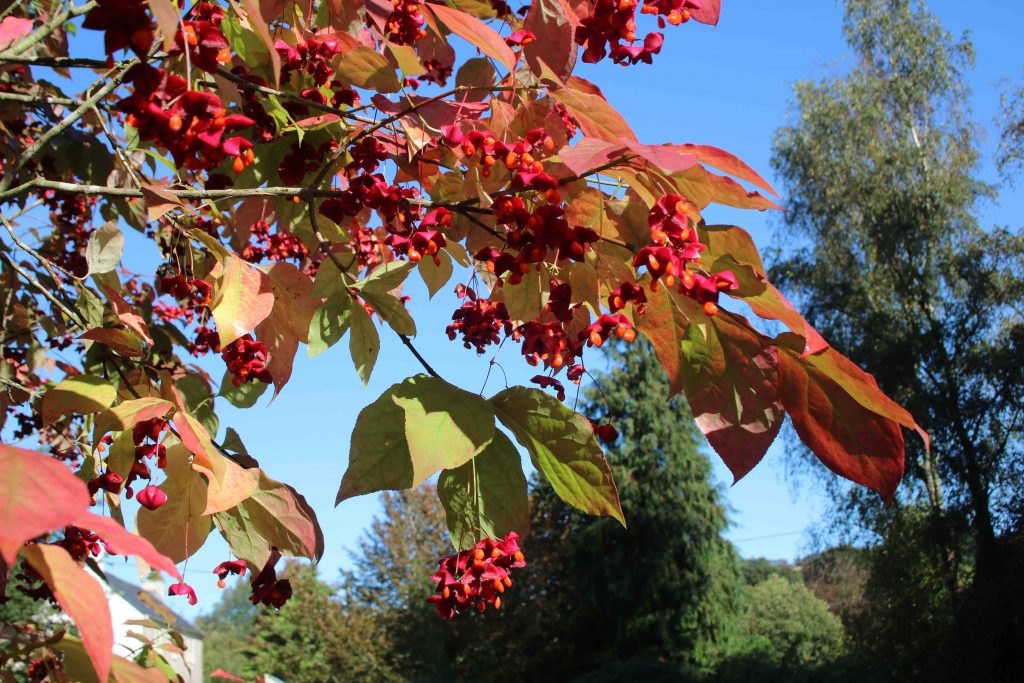
As summer fades to autumn a golden sun shines through the kitchen window. Sinking fast, it’s slipping out of sight behind the hills and only 3.30 in the afternoon. Autumn has arrived, light is fading, afternoons grow shorter, trees are turning, birds are leaving. And now the clocks have changed.
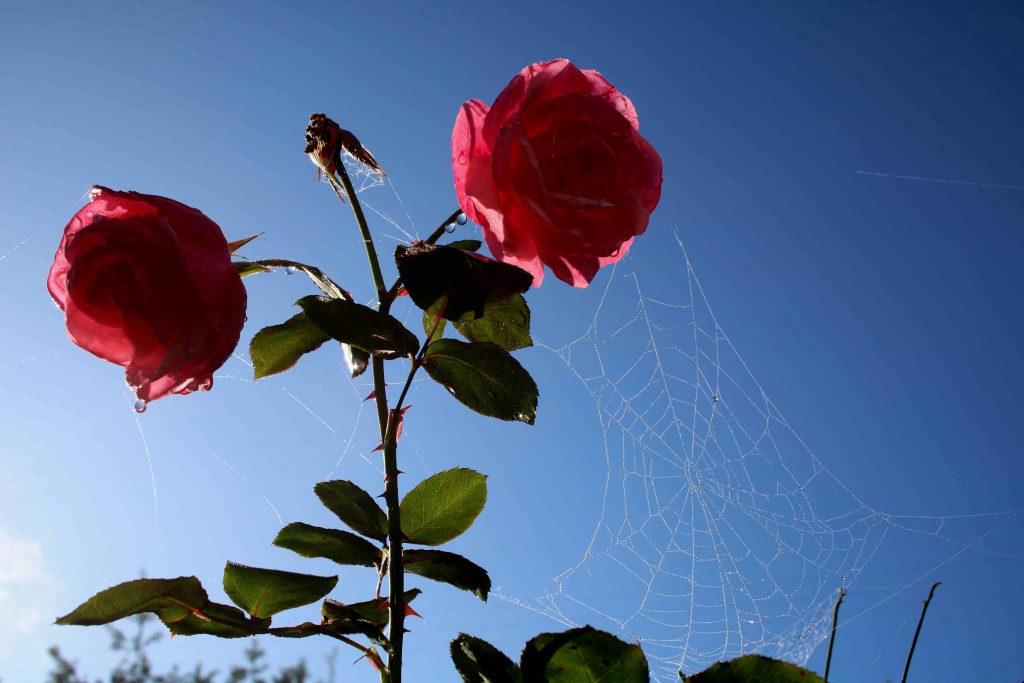
A certain melancholy fills the air as the garden gets ready for the winter sleep. Roses give of their last wistful glowing blooms. Dahlias and cosmos soldier on despite the damp, tomatoes vines wither, everywhere evidence of preparation for cold and hibernation.
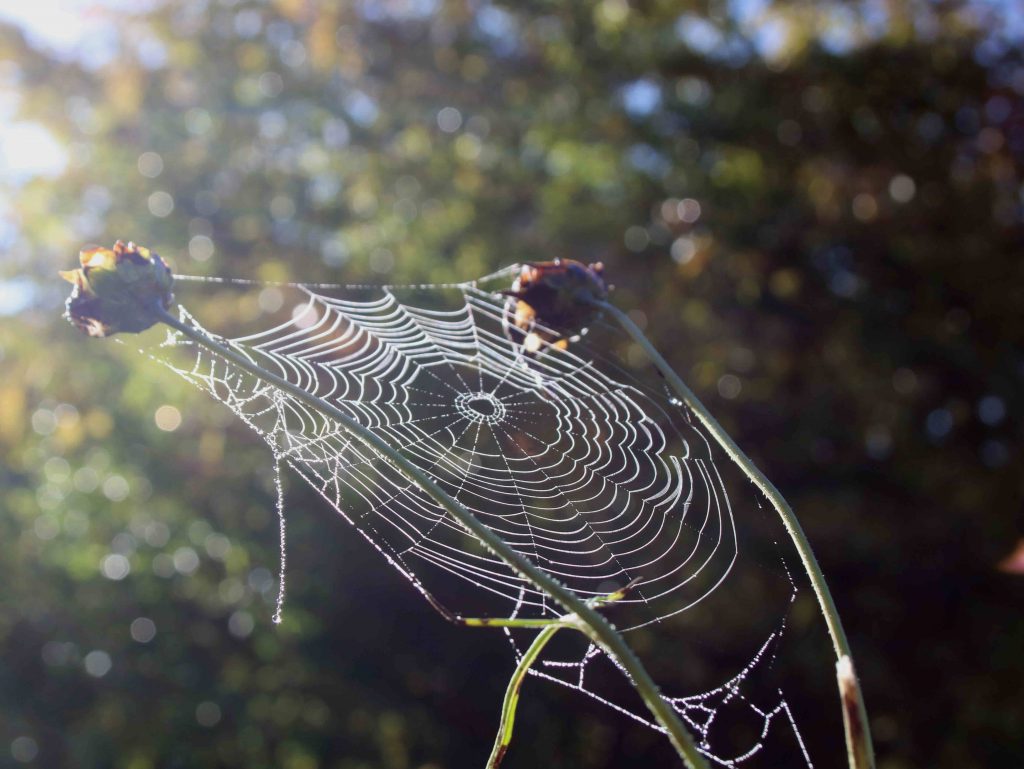
There was a chill in the air as I went up to the farmyard this morning. Mist hung in the valley and exquisite little spiders’ webs glistened in the early sunlight. After days of rain blue sky slowly emerged through the greyness, sun crept up coyly through the valley. Millie and I counted contented sheep as we walked through the fields. Silence enfolded us broken only by the sudden cry of a wheeling buzzard overhead: this too, a cry of autumn.
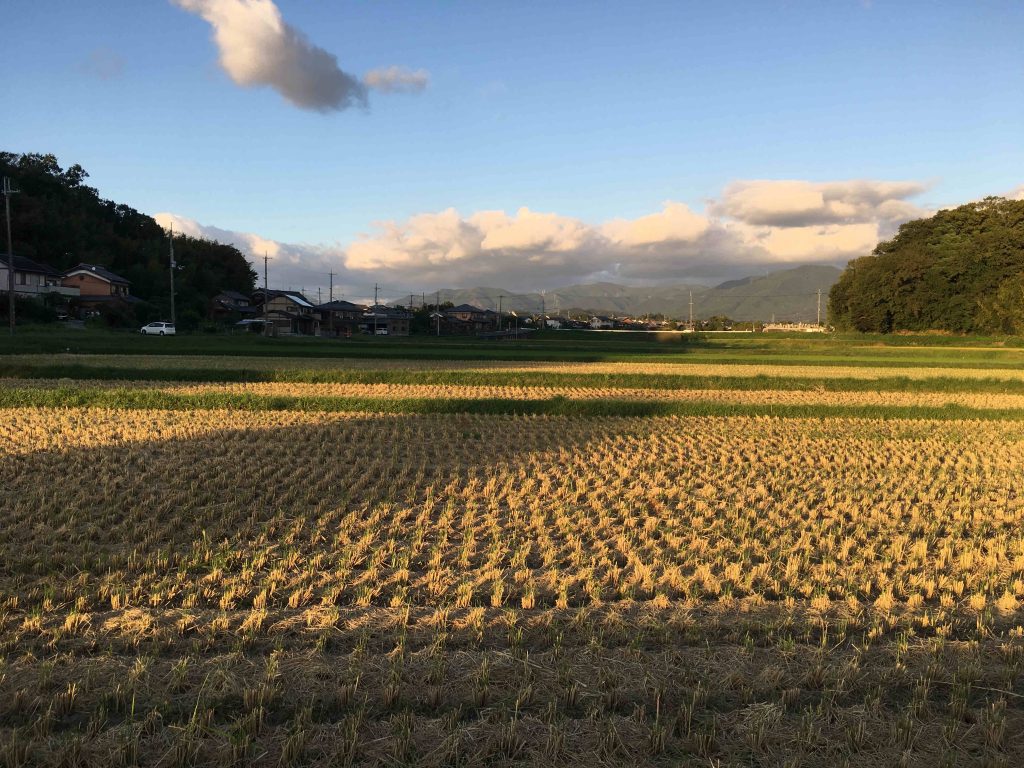
And yet it seems only moments ago we were struggling in the heat and humidity that was Japan. No rugby for us but another wonderful holiday with our family in the Japanese countryside, all rice fields and mountains, so different from Devon. There we were back again in the little town of Hino two years since our first visit.
Our start was not auspicious. Having booked our journey months earlier World Rugby on our minds, we found ourselves caught by the British Airways strike, flights cancelled at the last minute. We were issued with flights three days early but alas, no one to look after the farm until our house sitter was due to arrive the following week. A dear friend stepped into the gap.
So started a slightly stressful journey to Heathrow so different from our many previous Japanese adventures! But we made it and our flight took off on time. We landed at Narita airport instead of Haneda, made our way across the busyness which is Tokyo eventually climbing onto the Shinkansen to Odawara. A taxi took us up into the hills to a beautiful little Ryokan hotel in Hakone. We wonder how they are now. We learnt just last week that it was very badly hit by the recent terrible Typhoon. Three feet of rain fell in just twenty four hours. We so hope they are safe but have heard nothing from them.
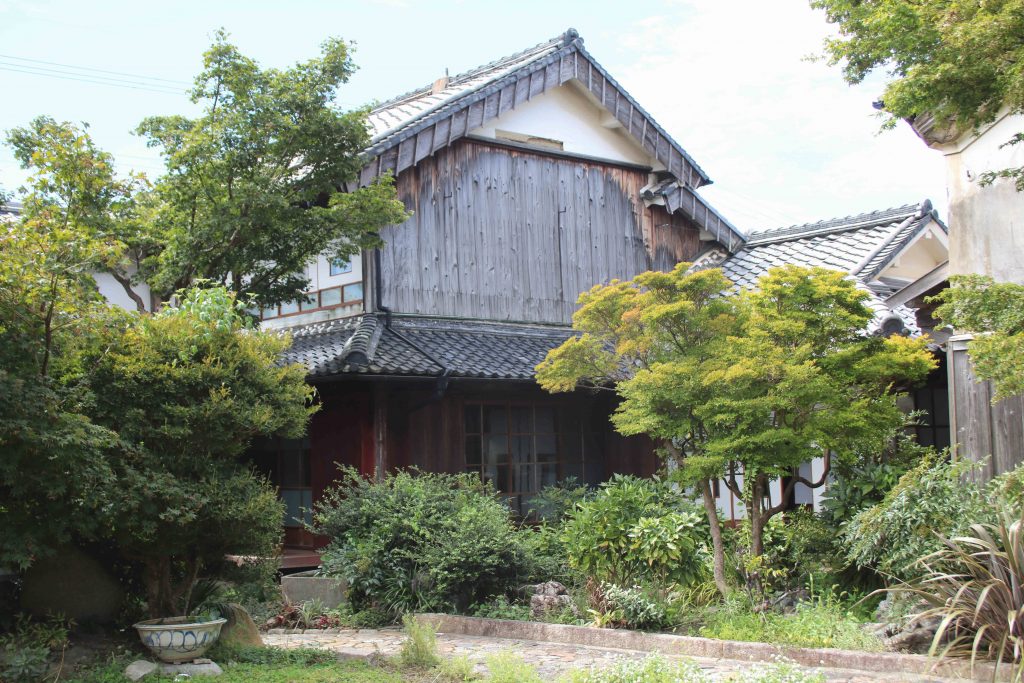
Restored, our jetlag subsiding, we travelled on to join the family in their beautiful old Japanese Merchant’s House in Hino just northwest of Kyoto. From here we visited one of the oldest potteries in Japan in Shagaraki. We went to temples, beer festivals, wonderful restaurants, art exhibitions, walks in the rice fields. We drove round Lake Biwa in the sun and so much more.
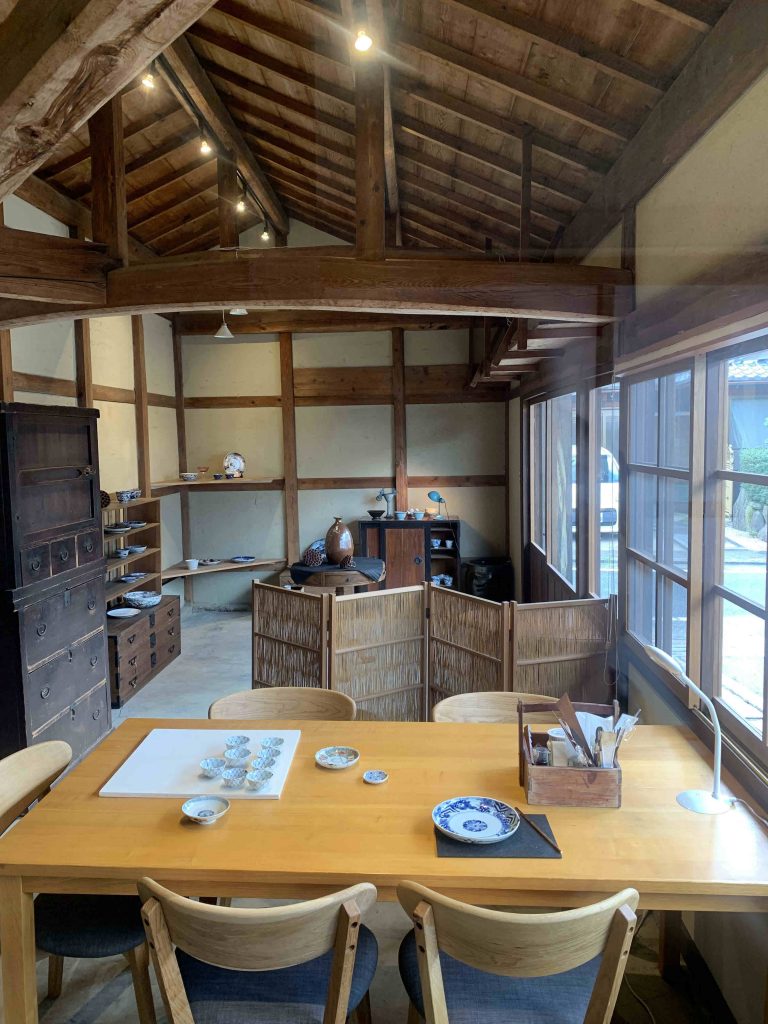
A highlight of the whole three weeks was a trip to Kyoto to the studio of our daughter-in-law’s Kintsugi Sensai. Nolly is becoming a sensai herself now , opening her own studio in Hino. Kintsugi is the ancient art of restoration. It is said to go back to the Shogun, Ashikaga Yoshimasa, in the C15th. Disappointed with the repair of a favourite tea bowl by Chinese craftsmen, he encouraged his own people to develop another more beautiful way to mend broken treasures.
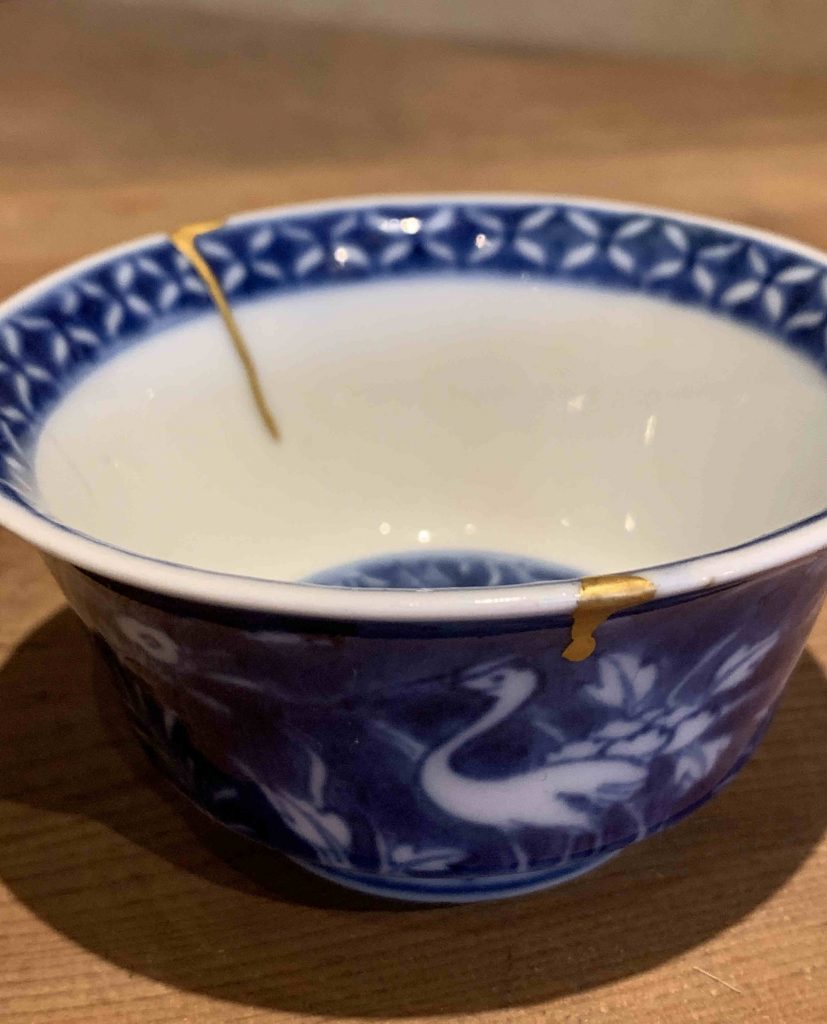
It is a meticulous skill particularly fascinating to me, reminding me of my previous life as a jeweller. A special sap called urishi, gathered from lacquer trees, is mixed in various ways to bond the breaks and fill the chips in beautiful but damaged objects. Finally a layer of gold dust melts magically into the tiny seams restoring heartbreak and turning loss into incredible beauty: a truly Japanese art.
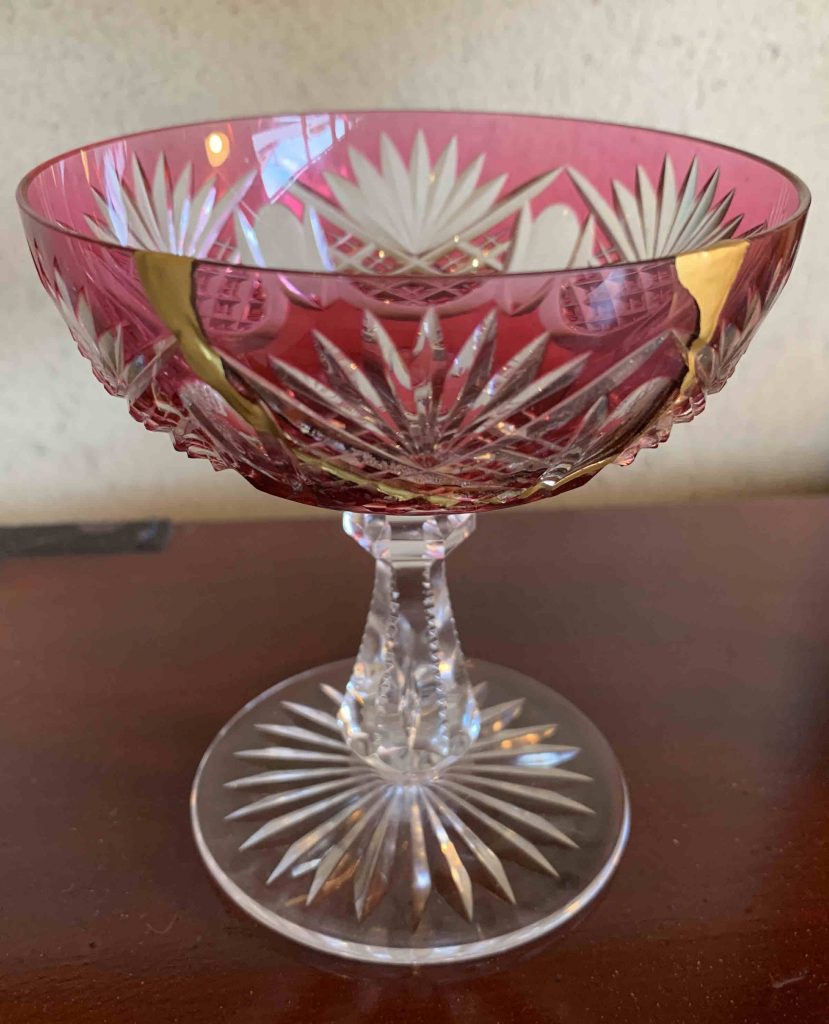
And, of course, we ate amazing and delicious food! This time I had the opportunity to learn to cook all sorts of new and exciting dishes. Nolly is a marvellous cook, well known for her workshops at the Dartmouth Food Festival in Devon. Japanese food is becoming increasingly popular all over the West as we become more and more aware of what we are eating. The food is so light and healthy, fat and sugar free!
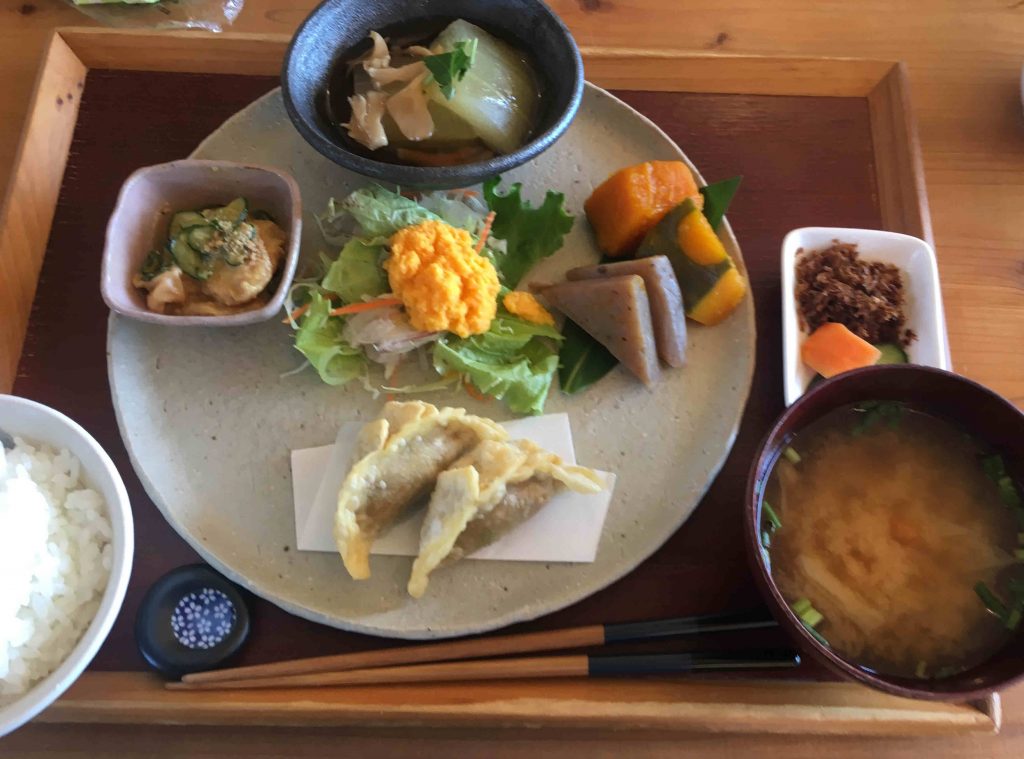
I watched Nolly make her own dashi, or Japanese stock. Dashi is used as a base for so many dishes, including miso soup, a staple eaten at almost every meal with many variations: maybe shitake mushrooms, dried whiting, tofu, mixed vegetables. The possibilities are endless.
First a piece of konbo, a kind of kelp, is soaked in water over night. Next day it is heated gently until bubbles began to appear. Then it is taken off the heat, the kelp removed and handful of fine bonito flakes shaved from a piece of dried tuna, are added.The broth is heated again then strained and the bonito removed: the result a delicate fish stock which can be used in so many ways.
For miso soup a spoonful or two of miso paste is added. Miso is the fermented paste of soya beans, grain and kogi, the fungau asperquillus oryzae. It varies from region to region but turns up everywhere and is incredibly healthy and delicious. Earlier this year I was lucky enough to be invited to the house of Japanese friend here in Devon to make my own miso. How lucky am I to have my own jars of miso gently maturing in my kitchen!
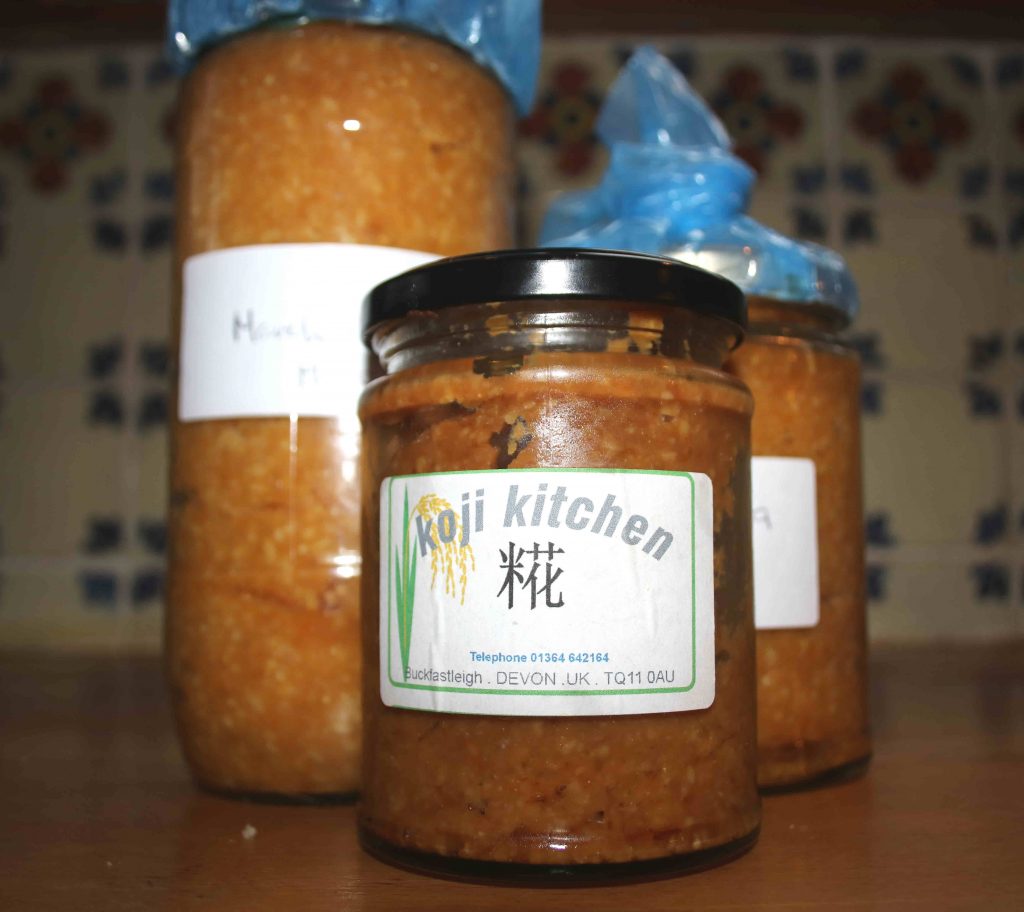
One evening Nolly quickly fried some sardines. Once cool she marinated them in dashi, mirin, sweet rice vinegar, soy sauce, onion, carrot, celery, red pepper and a dash of chili. We ate the little fish with sticky Japanese rice, miso soup and a wonderful salad dressed with finely chopped leek, grated ginger, sesame oil, soy sauce, rice vinegar, ground sesame seeds and lemon juice.
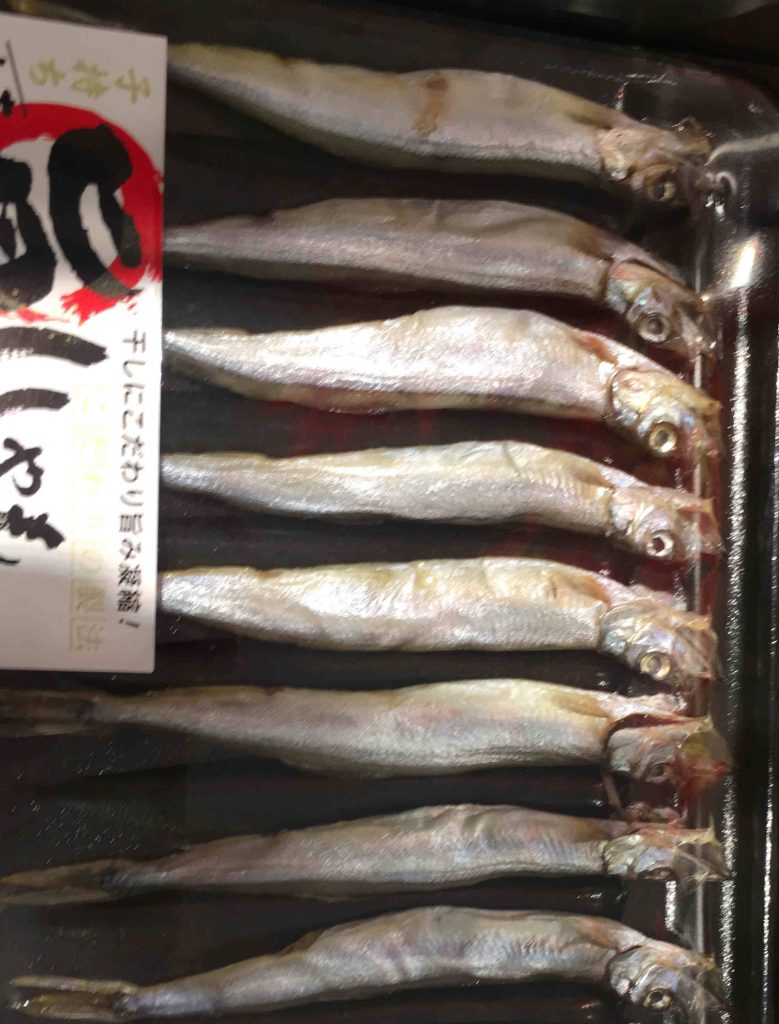
Another feast was a pork supper: very finely sliced pork cooked quickly with onion, ginger, sake, mirin and soy sauce, wonderful.
Next a quick meal which seemed to appear magically, as if from nowhere, was chicken and beansprouts. An hour or so before supper cubed chicken went into a bag with grated onion, garlic, root ginger, some sake and soy sauce and black pepper. The bag was sealed, the meat massaged a little then the left in the fridge. Then everything was tipped into a non-stick pan over a medium heat and cooked until the chicken pieces were brown. In went a big handful of bean sprouts, the pan covered and everything steamed for a few minutes. A sprinkling of fresh chopped coriander finished the dish which we ate with pickles, Japanese rice and miso soup.
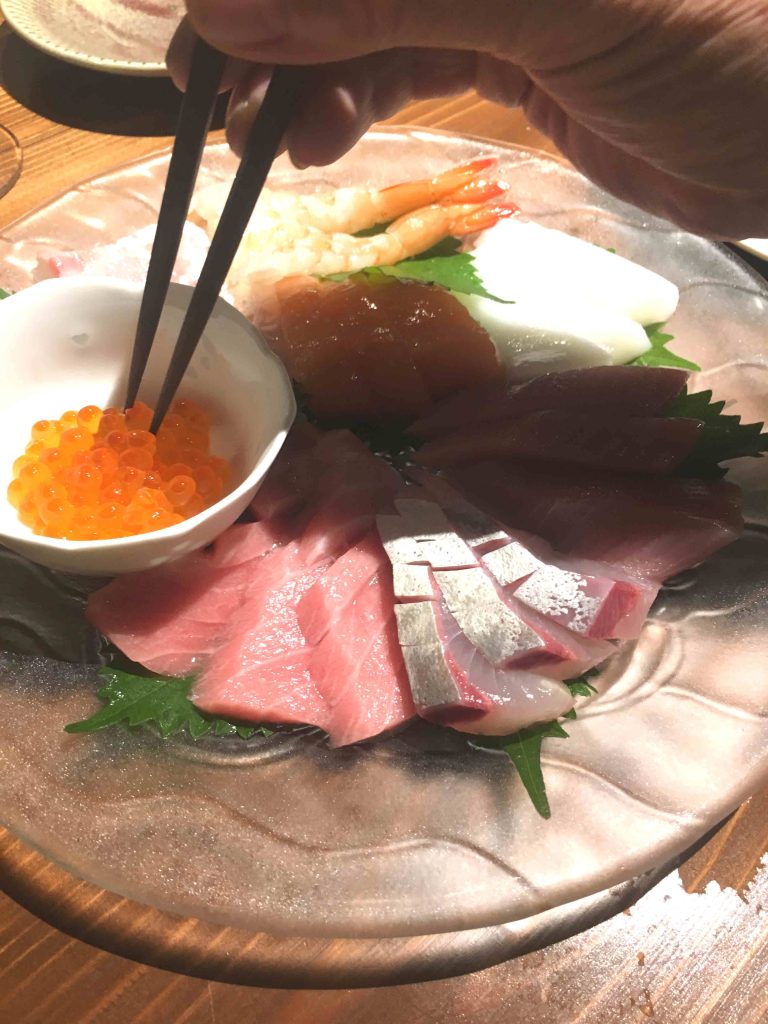
Finally of course, we had the greatest treats of all: sushi and sashimi! The freshest, incredibly finely sliced raw fish already prepared and ready to eat from the amazing fish counter in the local supermarket.
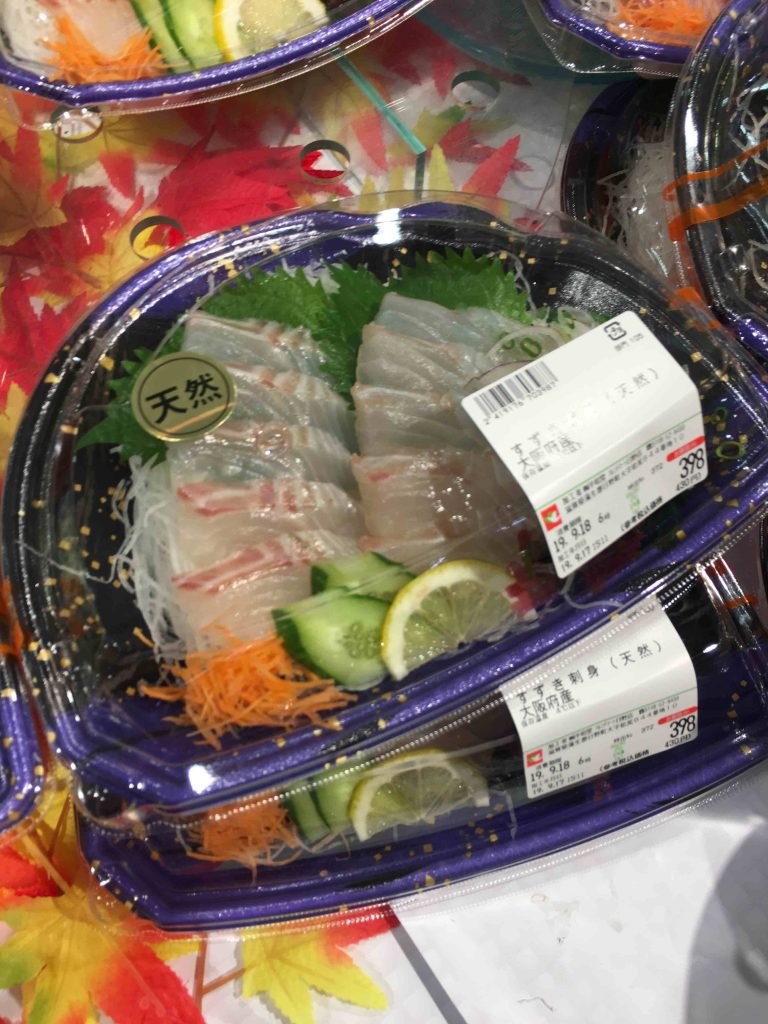
It made me realise yet again how fortunate we are in Devon to have such wonderful fresh fish on our doorstep here too. And now, thanks to Nolly, I have another way to serve it!
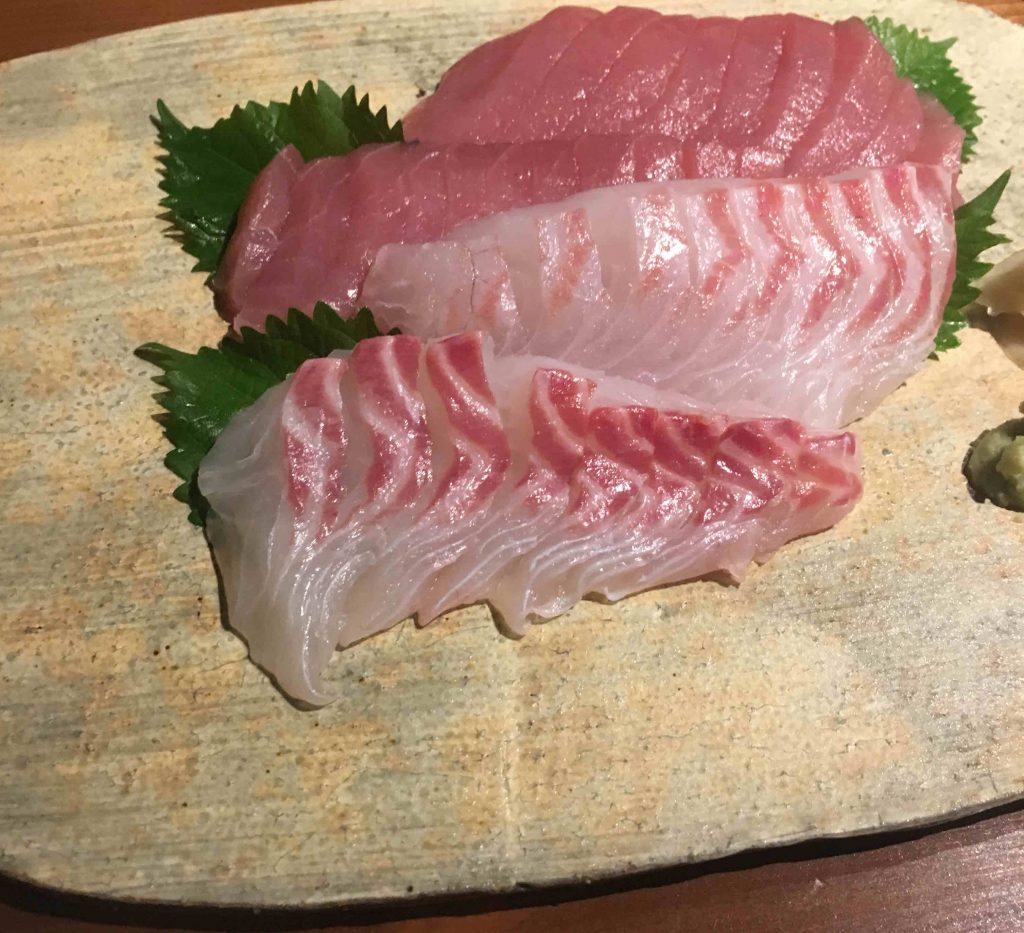
Leave a Reply